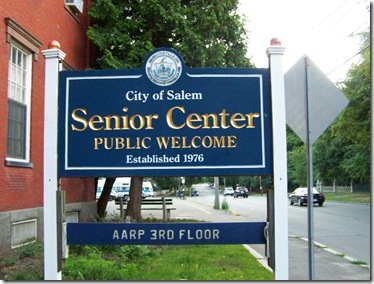
Joan Lovely appeared on Salem Now a few weeks ago, and one topic that took most of the show was the search for a new senior center; Mrs. Lovely was on the selection committee. She and the committee have completed their work, and three sites have been listed in their report: Memorial Drive (next to Camp Naumkeag), Fort Lee (nearby, adjacent to Salem Willows) and Boston & Bridge St. (proposed by Mayor Driscoll.)
I’ve written about this before when people were buzzing about using the St. John’s School property at St. Peter St. St. John’s did not make the list; no reasons were given in the report.
Since two of the three sites are very close to one another, this is really a choice between Boston St. and the Willows.
The loudest voices appear to be for the Willows sites. Teazie Goggin wants the Memorial Drive site as does Leo Jodoin, the host of Salem Now.
The Boston St. site is seen as a “quick fix” on the part of the mayor.
I’m very uncomfortable with the Willows sites and here’s why.
First, remember that the senior center is being used year round. A few years ago, I attended an emergency preparedness seminar held by the Salem Department of Health, at the function center on Winter Island.
In February.
The building was heated, and it is a beautiful place for a function. But you could not look at the waves outside and not feel the bitter cold go through you. Imagine the feeling of isolation at 3 PM in January.
The committee is imagining the center on a beautiful summer day like the one we are having as I write this. That is not even the reality for much of the year.
Second, transportation. Juniper Point, where the Willows sits, is one of the more isolated parts of Salem. There is no public transit in that neighborhood, except for the tourist trolleys that run during the summer. MBTA service ceased in the early 70’s.
The Council on Aging has vans, one thinks, why not those?
The COA runs a good van service. They, like other paratransit providers, use their vans for on-demand trips to doctor’s appointments, and for scheduled trips to supermarkets and the malls.
But one can’t just decide to go to the senior center; one has to call, wait for a ride, and go. I went through this myself when I was in school and considered “special ed”, so therefore I also had to have “special” transportation. I remember spending too many hours waiting for the special van or taxi to take me to school. I didn’t feel too independent. I’m horrified to imagine that as an elder, I may be taken back to those days.
In the 80’s and 90’s, and to a certain extent still today, the MBTA did not really want to make their main transit services accessible to people with disabilities. They preferred people use “The RIDE”, their paratransit service for the disabled. A dear neighbor of ours, the late Jane Gallant, fought with her life to get the MBTA to bring accessible buses to the Salem area, and then to build a wheelchair ramp at Salem Depot. The disability community in Salem will not accept van services in lieu of regular public transit that's accessible to all.
Van services, by their nature, are "separate but equal". Except, of course, when you want to go to the senior center on your schedule, the kind of privilege that seniors who drive can take for granted.
A factor that Lovely cited that favored the Willows sites: 70 percent of seniors would drive to the center. They, presumably, have a choice and have the voice in this debate.
30 percent of seniors--and future seniors like myself, do not.
Compare that with the Boston St. site. The 465 bus runs by there. That bus serves the North Shore Mall and Liberty Tree Mall, as well as downtown Peabody, and a good part of Boston & Essex Sts.
That route has been around for decades under different operators (Eastern Mass. Street Railway, MBTA, Michaud, ABC Bus, and now back to the MBTA) and is a well-established route for seniors and non-drivers like myself.
It's been suggested that the MBTA be petitioned to restore Salem Willows service. I don't see it. There would not be enough ridership from seniors by themselves, so it would have to serve the Willows park as well, and even then there might only be summer service. We might have to trade off one bus route for it.
The mills and factories, destinations for the buses, that once lined Webb St. and Fort Ave. haven't existed in decades and were already well in decline when the MBTA discontinued service to that neighborhood.
As well, the neighbors will stop any attempt at reestablishing buses. Every few years, someone from the city decides they want the T to restart service between Marblehead and Salem, which was also lost in the early '70s. And every time, the idea is quietly dropped, no doubt due to the state rep in Marblehead quietly telling Salem to stuff the idea. [Update below]
I don't expect any different from the Willows.
Leo and others talk about the traffic problems and inadequate pedestrian access on Boston St. The level of traffic is indeed legendary; I lived in that area for 8 years from '74 to '82, and not much has changed.
But the state has been talking about redoing Boston St for years. Why not redo the Boston/Bridge St. intersection? If that is done, and the signals at Pope St., Grove St. and Nichols St. are upgraded to audible signals for the disabled, that will satisfy any concerns.
It's probably easier to get the state to do that and pay for that once, than it would be to get the T to establish a new bus route. And it has to be done anyway, senior center or not.
Or just ask: How many seniors walk to functions at the AOH Hall, or attend Bingo at St. James' Church? If they walk, that puts the lie to the traffic argument right there! If it's safe enough to walk to the AOH (and more importantly, back at night after their revelries!), it can't be that dangerous to walk to the COA in the daytime.
The report of the Senior Center Committee mentions focus groups for three different groups of seniors, "young" seniors around 60, "middle-aged" 70-year olds, and "old seniors" around 80.
I'm 45. In 15 years I will be eligible to use the senior center, indeed, I may be among the first cohort of seniors to do so. In talking to seniors, I have been told countless times that "the kids of today only live for now", that "they don't think for tomorrow." and etcetera.
I'm more than a little bitter that I have been ignored and not considered as part of the group that is planning for seniors, when I do nothing but think of the long term. The current senior center was established in 1976, so it's been around for 32 years; the new center will be around for at least that long and I don't like what I see that far out.
Getting back to the 70% of seniors with cars: Our generation has been very fortunate to enjoy the immense inherited wealth of our society post WWII, and to enjoy the power that lets us drive cars wherever we want and not worry about the future. Today's seniors have had it much better than past generations.
That period may be over for good.
We can't guarantee that future seniors will be able to afford to drive, even if they're still in shape to do so. Even now with $4 gas, seniors with cars are being squeezed.
I have come to think that the committee knows these things, but that many seniors have another motivation for having the center at the Willows.
"Those people" won't show up there.
I had wanted to say this ever since the controversy happened over Mayor Driscoll's original proposal to build the senior center at St Joseph's Church. Most seniors aren't racist, but I fear that many of the loudest opponents of her plan, many of whom screamed about safety and traffic, didn't have good motives during that debate.
Many people in support of the Willows locations, including some of the committee members, have expressed and gushed over the desire to have a "special place for seniors".
Special for whom? Will this be an asset in trust and for use by future generations of young and old?
Or is it just a clubhouse for the few, paid for by public funds?
It doesn't look like the senior center may be for me. Or for anyone not of the right color, language or economic standing.
The new senior center: Who's it really for?
Salem Senior Center Committee Report [PDF]
UPDATE: Joan Lovely responds with some clarifications.
UPDATE: This time, Marblehead floated the idea of bus service to Salem, but as their liaison to the MBTA points out, “[the] T would likely look more favorably on such a request if the town were willing to simultaneously “trade off” other service. He asked board members and residents to think about routes that may have low ridership, which could potentially be eliminated.” The liaison has to know there are only the 441 and 442 routes into Marblehead which are both very active, so good luck with that one. It only reinforces my point that a Salem Willows T bus just won’t happen, at least without a bigger sea change—and budget—than we have seen so far.
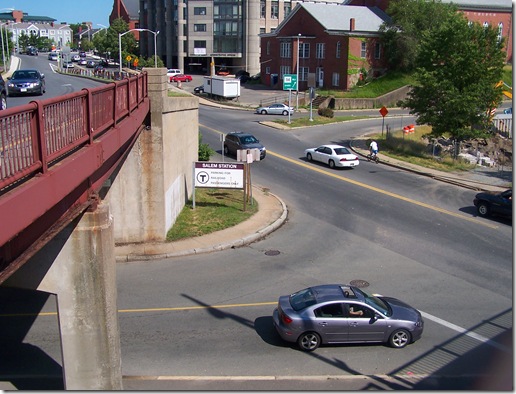


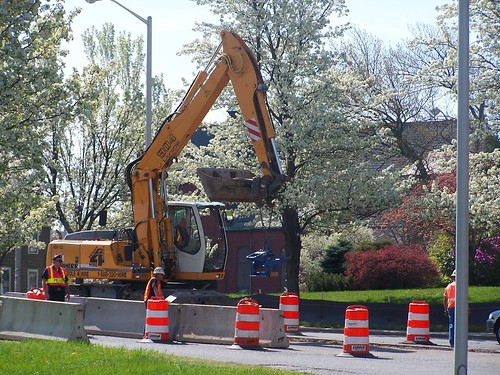
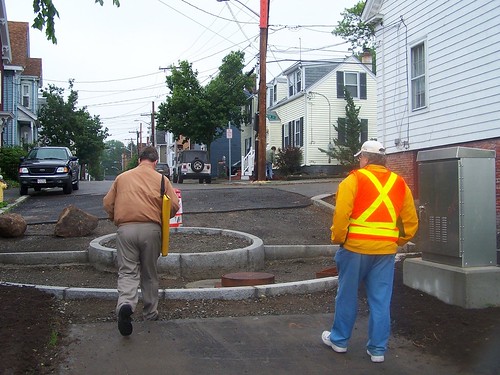
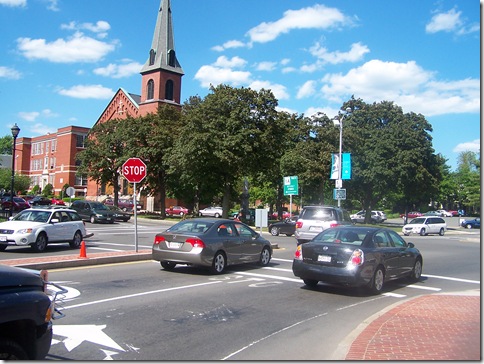
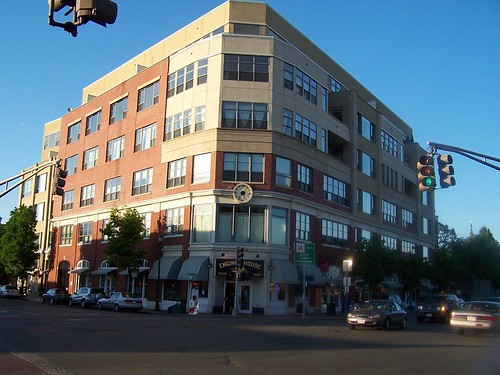
 [An evening train to Newburyport going north over the drawbridge.]
[An evening train to Newburyport going north over the drawbridge.]